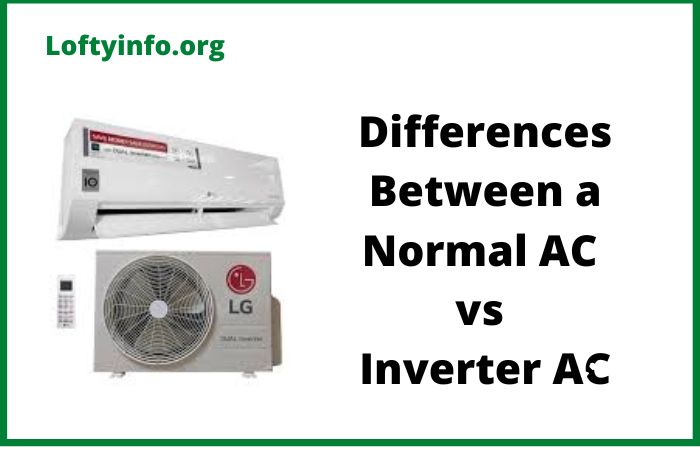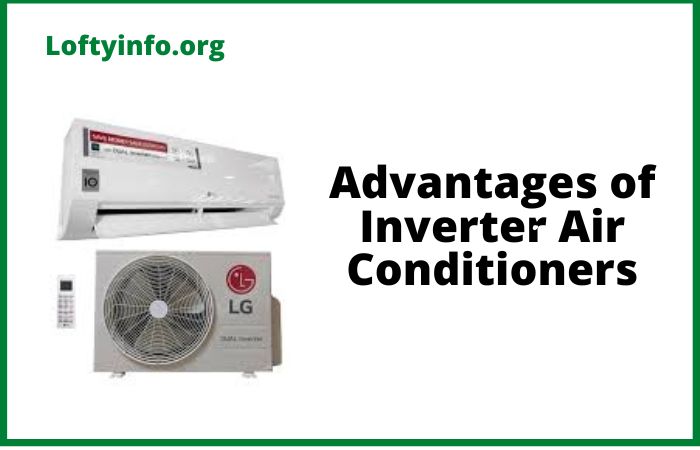Differences Between a Normal AC vs Inverter AC
Air conditioning technology has evolved significantly over the years with inverter AC systems emerging as a popular alternative to traditional normal AC units.
Understanding the differences between these two technologies is crucial for making an informed purchasing decision.
Here is a detailed explanation on the differences between the two of them.
Differences Between a Normal AC vs Inverter AC
1. Compressor Operation and Technology
Normal AC (Non-Inverter): The conventional AC operates on a simple on/off mechanism. When the room temperature rises above the set point, the compressor starts at full capacity and runs until the desired temperature is achieved.
Once reached, the compressor completely shuts down.
This cycle repeats continuously, creating a binary operation where the compressor is either running at 100% capacity or completely off.
Inverter AC: Inverter technology employs a variable-speed compressor that can adjust its operating frequency and capacity based on the cooling demand.
Instead of turning on and off repeatedly, the compressor gradually increases or decreases its speed to maintain the desired temperature.
This is achieved through a sophisticated electronic control system that monitors room temperature continuously and modulates the compressor’s performance accordingly.
2. Energy Efficiency and Power Consumption
Normal AC: Traditional air conditioners consume significantly more electricity due to their start-stop operation.
Each time the compressor starts, it requires a high initial power surge often 3-5 times the normal running current.
This frequent starting and stopping results in substantial energy wastage and higher electricity bills.
The average energy efficiency ratio (EER) of normal ACs typically ranges from 2.5 to 3.2.
Inverter AC: Inverter ACs are considerably more energy-efficient, consuming 20-50% less electricity compared to conventional units.
Since the compressor operates continuously at variable speeds rather than starting and stopping frequently, it avoids the high power surges associated with startup.
The elimination of frequent on/off cycles and the ability to operate at optimal capacity based on actual cooling requirements results in substantial energy savings.
Modern inverter ACs can achieve EER ratings of 3.5 to 5.0 or higher.
3. Temperature Control and Comfort Level
Normal AC: Conventional ACs provide less precise temperature control due to their binary operation.
The room temperature fluctuates around the set point, creating noticeable temperature variations.
When the compressor turns off, the room gradually warms up until it reaches the upper threshold, triggering the compressor to restart.
This creates a sawtooth temperature pattern that can be uncomfortable for occupants.
Inverter AC: Inverter technology delivers superior temperature stability and comfort.
The system maintains the desired temperature with minimal fluctuations by continuously adjusting its cooling capacity.
This results in a more consistent and comfortable indoor environment with temperature variations typically within ±1°C of the set point, compared to ±2-3°C in normal ACs.
4. Noise Levels and Acoustic Performance
Normal AC: Traditional air conditioners tend to be noisier due to the frequent starting and stopping of the compressor.
The sudden engagement of the compressor creates mechanical noise and vibrations that can be disruptive, especially during nighttime operation.
The on/off cycling also generates varying noise levels throughout the cooling cycle.
Inverter AC: Inverter ACs operate much more quietly because the compressor runs continuously at variable speeds without abrupt starts and stops.
The gradual speed changes and consistent operation result in lower noise levels and reduced vibrations.
Many inverter models operate at noise levels as low as 35-40 decibels, making them ideal for bedrooms and quiet environments.
5. Initial Cost and Long-term Investment
Normal AC: Conventional air conditioners have a lower upfront purchase price, making them attractive to budget-conscious consumers.
This initial cost advantage can be misleading when considering the total cost of ownership over the appliance’s lifespan.
Inverter AC: Inverter ACs typically cost 20-40% more than comparable normal AC units initially.
This higher investment is often justified by the significant energy savings over time.
The reduced electricity consumption can result in payback periods of 2-4 years, depending on usage patterns and local electricity rates.
Additionally, the improved durability and longer lifespan of inverter systems provide better long-term value.
6. Cooling Speed and Performance
Normal AC: Traditional ACs cool rooms relatively quickly when first turned on because they operate at maximum capacity immediately.
This rapid cooling is followed by periods of no cooling when the compressor is off, leading to inconsistent performance over time.
Inverter AC: While inverter ACs may take slightly longer to initially cool a room from a high temperature, they provide more consistent and efficient cooling performance overall.
The variable-speed operation allows the system to adapt to changing conditions and maintain optimal performance throughout the operating cycle.
In extreme weather conditions, inverter ACs can actually outperform normal ACs by operating at higher capacities when needed.
7. Environmental Impact and Sustainability
Normal AC: The higher energy consumption of conventional ACs results in a larger carbon footprint.
The frequent on/off cycling also puts more stress on electrical grids and contributes to peak demand issues during hot weather periods.
Inverter AC: Inverter technology is more environmentally friendly due to its reduced energy consumption and improved efficiency.
Lower electricity usage translates to reduced greenhouse gas emissions from power generation.
Many inverter ACs also use more environmentally friendly refrigerants and are designed with better recyclability in mind.
Conclusion
While normal ACs may seem attractive due to their lower initial cost, inverter ACs offer superior performance in terms of energy efficiency, comfort, noise levels and long-term value.
The choice between the two ultimately depends on individual priorities, budget constraints and usage patterns.
For consumers prioritizing long-term savings, environmental responsibility and optimal comfort, inverter ACs represent the better investment despite their higher upfront cost.





